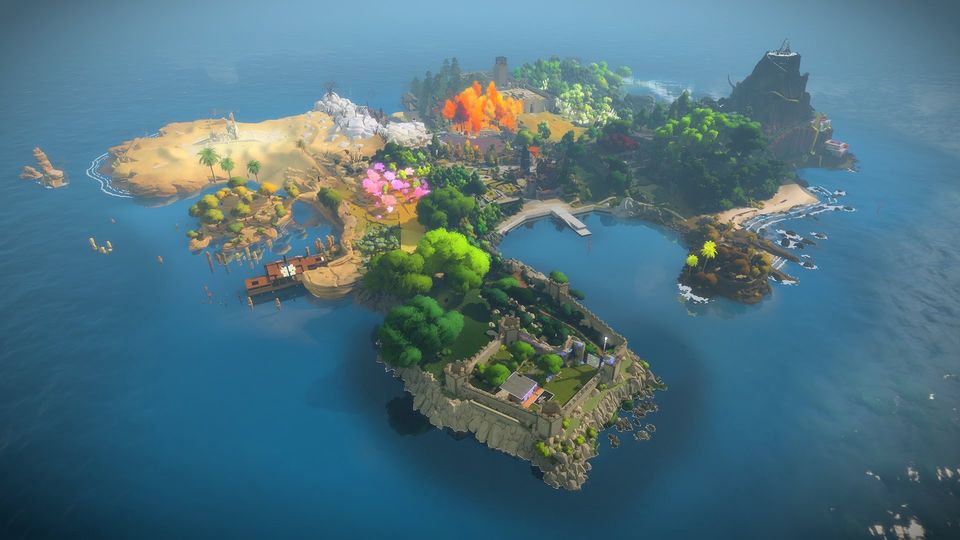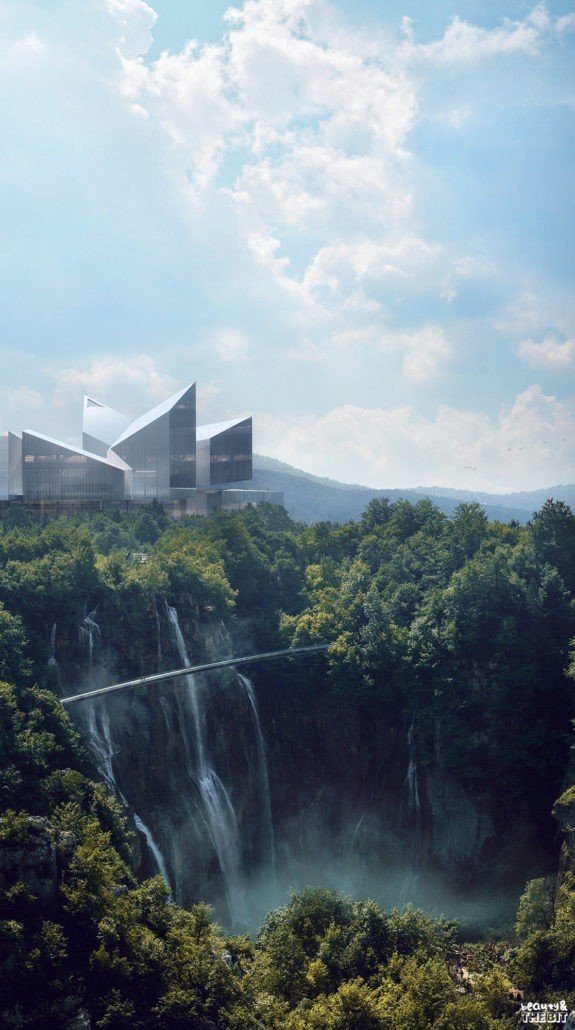The Art of Video Game Architecture
Website Editor • February 26, 2020
Architects and video game designers are more similar than you think. You might be wondering why. Well, both use similar tools to conceptualise virtual buildings with a user centric approach in mind — except of course, one has the intention for it to be actually built in real life. We rarely hear of an overlap between these two professions but the commonality can be quite beneficial to both parties.

The Island of The Witness by Thelka Inc. and Jonathan Blow
Games for Social Change
Consider the UN-Habitat’s ‘Block by Block’ programme. When creating public spaces in poor and developing communities, UN-Habitat wanted to gather the perspective and ideas of the people that would be using it the most. To do this, they gave Minecraft to members of the community, giving them real input into the design of their public spaces. Using Minecraft, they created the kind of spaces and structures that they would like to see in their community, which team then took into consideration when designing the new public spaces. This flourishing programme has resulted in great projects all over the world, which you can check out at their website.
Another example is “Block’hood”, a neighbourhood planning simulator that asks the player to consider ecological, social, and economic factors while building. By creating a game where the player must balance the energy inputs and outputs of the building. Buildings are made up of block with special requirements, failing to follow them can lead to decay, entropy, and abandonment. The creator, Jose Sanchez, seeks to educate people on the complexity of city building and the global challenges of modern architecture.
‘The Fall’ by Beauty and the Bit for Bekerman’s Blog
An increasingly permeable connection between architecture and video game design can also be seen in architectural visualisation. One of the industry’s best, Ronen Bekerman’s Architectural Visualisation blog, showcases gorgeous concepts both for the real world and video game designs with the increasing photorealism of the latter making them almost indistinguishable from reality. Through competitions he runs, Bekerman sometimes asks readers to combine the two fields by creating architectural visualisations using video game engines like, Unreal 4. The results function not just as a showcase for a building, but mood pieces in their own right which could easily be the opening of a film or game. The winner of one competition, the visualisation for the Neue Nationalgalerie in Berlin, shows this well. Tools ostensibly for video game creation can be fantastic tools for architects to create interactive 3D models, complementing the current trend of using VR to show clients potential spaces.
Building your Game Correctly
Of course, it goes both ways: the expertise of an architect can also be invaluable in developing video games. Historically, games would have been designed as separate levels, or hub worlds, with loading times between each area. This meant each area could have significantly different designs without it feeling jarring. Now, games in which the whole world is open to you, with little to no load times in between, are becoming increasingly common. These worlds need to function as a cohesive whole: with enough variety for the player to experience different environments while maintaining a consistent style and a natural transition in environment. Architects and landscape artists can be invaluable in achieving this. A good case study is, “The Witness”. "The Witness", is a game where the player finds themselves on a deserted island, populated only by derelict buildings and gorgeous scenery. While exploring the island, the player has to solve abstract puzzles linked to the environment and architecture around them. It’s a quiet, pensive game brought to life by the detail inserted into every area of the island.
To achieve this, director Jonathan Blow enlisted architects and landscape architects from outside the video game industry to give a unique perspective, not blinkered by the usual assumptions of video game design. Designing the game required creating distinct buildings for each area of the island, each inspired by the style of different eras and civilizations, a job best done by an architect. Many of the puzzles require the manipulation of light or perfectly aligning your view of a building to find the solution. The flora also plays a vital role, not just for puzzle design: there is no dialogue in the game and music is sparse, meaning the beauty of the island is an important part of keeping the player engaged. Deanna Van Buren, architect and FOURM design studio founder, had never worked in video games before and now advocates the inclusion of architects in the video game development process. In interviews, Van Buren talks about her experience working on games and how she no longer had to consider some constraints (the position of the sun never moves in The Witness) while having to consider new ones (how the player navigates the space). As shown in the Witness, incorporating real world architecture into games can make them feel more authentic. For another example take Gone Home, a game about a girl returning to her family home from college to find her family missing. The player explores the house, looking for clues and uncovering deeper details on her family’s identities and relationships. In that game the house is the only place the player goes, making its authenticity paramount to the player’s immersion.
Evidently, both architects and video game designers could benefit from the expertise and tools of the other’s profession. We’re looking forward to seeing what interesting new ideas will come about from these two collaborating using tools like Autodesk, VRay, Blender, and Unreal Engine.
Scriba is a revolutionary digital stylus that is ergonomically designed to comfortably fit your hand and uses unique Squeeze-Motion technology. Order here.
Articles

The United Nations has described the disruption to education caused by the pandemic as ‘unparalleled’. At the virus’ worldwide peak in April, it is estimated that over 90% of all enrolled learners, from kindergarten to bachelors and beyond, had their education affected by school closures and the pandemic (UNESCO). For many university students and older children, they have had to adapt quickly to online learning. They can keep in touch with their peers and teachers online and continue their studies, albeit in a highly modified way. As challenging as this may be, this experience will help equip them for a future that is increasingly online. For parents of younger children, they are assuming a new role: their child’s home school teacher. This is in addition to their usual childcare and household duties, their work responsibilities and often emotional and financial worries caused by the pandemic. Stressful? Yes. The good, and somewhat surprising, news? The experts advise that you don’t teach your children - at least not in the way you might expect.

If the recent outbreak of Covid-19 has taught us anything, it's that many adults do not wash their hands effectively. It has never been more important that we support our children to develop good personal hygiene to keep themselves and our families safe. This seemingly easy task can be very difficult for children with fine motor skill difficulties. In this article, we explore some ideas to support your child with hand washing.

Lockdown has brought the digital future into the now. Online shopping, entertainment, education and more have moved from the periphery to the mainstream to, in many cases, the only option. With the necessity of social distancing looking to continue for many months, it appears that this rapid digital revolution is here to stay. This means that life as we know it, in most of its sectors, has changed forever. In order to survive, businesses are having to adapt rapidly, embrace technology and look to the future. Architecture is no exception. There has been a widespread adoption of technology and VR over the past few months in response to the lockdown across all of society. Elderly grandparents who were once resistant to adopt new technologies talk of “Zooming” and have started video chatting with their family members to combat loneliness. Art galleries that were once considered stuffy or pretentious are now pioneers in VR technology, with Google Art & Culture offering tours of London’s National Gallery or the Musee D’Orsay in Paris. These virtual tours deliver art in a dynamic new way that can be far more engaging than regular photos. Critics have applauded the panoramic and immersive views of gallery building and exhibitions which work well for rendering of 2 dimensional art, however impressions of sculpture is somewhat lacklustre. With VR technology, users can enjoy a truly immersive experience in the comforts, and safety, of their own home. The COVID-19 pandemic has served as an accelerant for the arts and entertainment industries to embrace VR.




